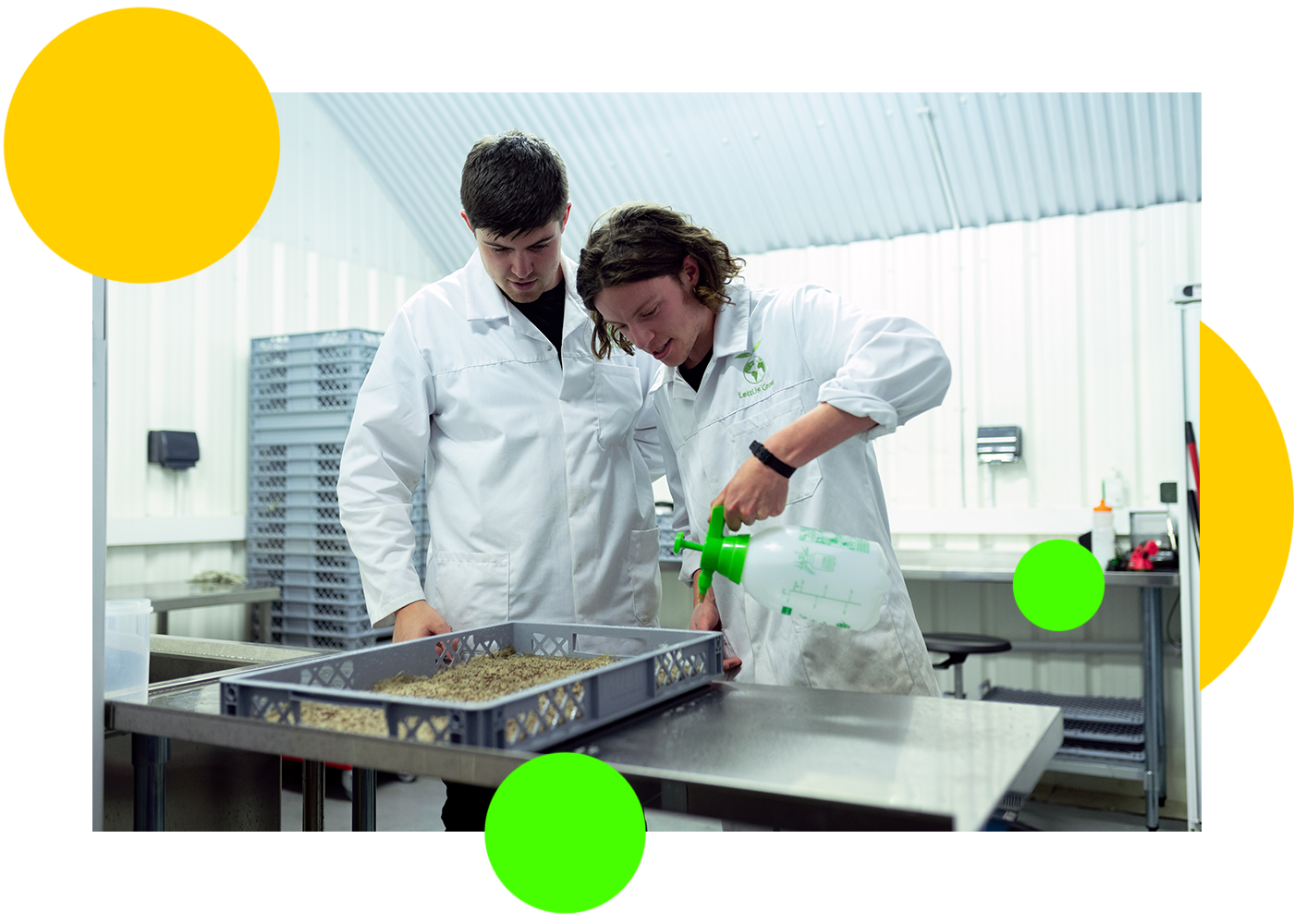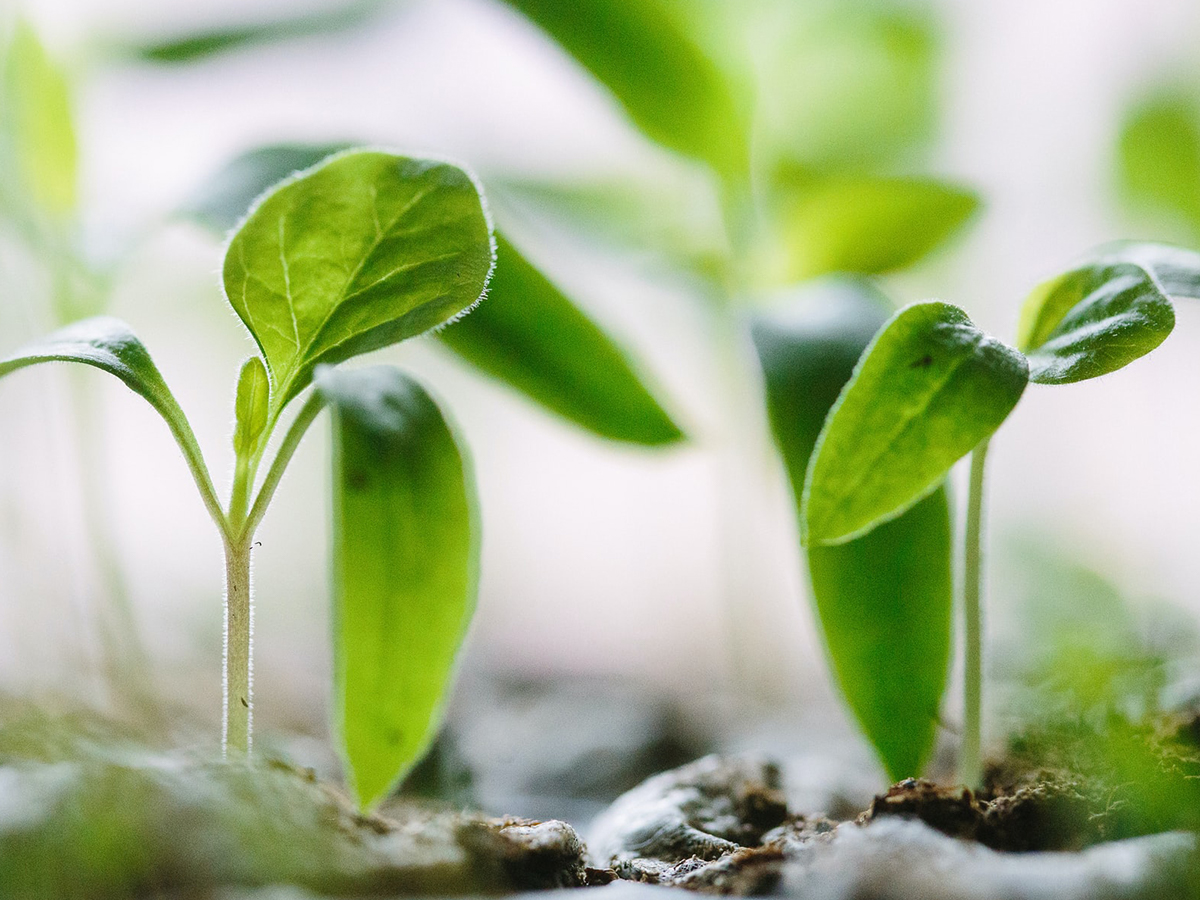In 2022, we saw a catalyst for change in the UN Climate Change Conference or COP27.
For some time, the food system has been the elephant in the room in the climate conversation. However, for the first time in history, a full day was devoted to the topic of food sustainability at the climate change conference. The first ever Food Systems Pavilion brought together over fifteen international leaders in the food space spanning public, private and not-for-profit sectors.
The food system is responsible for roughly one-third of all greenhouse gas emissions but currently receives only 3% of climate finance.[1] That’s twenty-two times less than the total amount of capital invested in energy and transport.
This is an enormous divergence and one we believe represents a significant opportunity for impact investors. COP27 is finally putting the flaws of the food system back on the table. Policymakers now have little choice but to engage with these issues, which we believe will unlock significant capital for the food transition in the years ahead.

What are the benefits for investors?
Investing in sustainable food has many benefits:
- Environmental: Sustainable food production practices can help reduce GHGs, conserve water and protect soil health.
- Social: It can help support local communities and promote food security by ensuring a stable and reliable food supply.
- Economic: It can create jobs and stimulate economic growth in the agriculture and food industries.
- Health: It can help reduce the amount of chemicals used in food production, which can have negative health effects.
Overall, investing in sustainable food is a smart decision for the environment, society and the economy. It can help support long-term food security and promote healthy and sustainable communities.
Key growth areas
In 2022, we saw a big surge in demand for agriculture and farming machinery. Meanwhile, supply chain bottlenecks delayed production and deliveries. At the same time, demand for commodities such as crops increased not only because of a growing world population, but also as a consequence of the conflict in Ukraine. Two macro trends are now becoming meaningful: scarcity of land as the urbanisation process goes on and scarcity of labour force. This paints an almost perfect environment for farming machinery manufacturers that hold oligopolistic positions in the agribusiness industry, such as Deere, AGCO and CNH Industrial. Furthermore, as there is increased demand for autonomous and precision agriculture that can boost productivity and efficiency without having to use more land or new workers, these companies can be expected to benefit further because of their hugely entrenched positions and sheer market size.

The European Green Deal was front and centre in 2022. In part thanks to the European Commission’s Platform for Sustainable Finance’s draft circular economy technical screening criteria that were published in March 2022.[2] But more recently, on November 30th, 2022, the European Commission unveiled its new EU-wide ruling on packaging.[3] On average, each European generates almost 180kg of packaging waste per year.[4] Packaging is one of the main users of virgin materials as 40% of plastics and 50% of paper used in the EU is destined for packaging.[5] Without action, the EU would see a further 19% increase in packaging waste by 2030 and for plastic packaging waste even a 46% increase.[6]
The new ruling on packaging aims to address this problem. For consumers, it ensures reusable packaging options, gets rid of unnecessary packaging, limits overpackaging and provides clear labels to support correct recycling. For the industry, it creates new business opportunities, decreases the need for virgin materials, boosts Europe’s recycling capacity as well as makes Europe less dependent on primary resources. It puts the packaging sector on track for climate neutrality by 2050.
We expect this to bode well for European sustainable packaging companies such as DS Smith, O-I Glass, SIG Combibloc and BillerudKorsnäs that focus on packaging that is reusable recyclable and compostable. DS Smith, for example, is already working with the Ellen McArthur Foundation to achieve a 100% recyclability target.[7]

Fertiliser availability was a political priority in 2022. Since the onset of the Ukraine war, indeed even in the build up to the war, a global fertiliser crisis has metastasized. Russia remains a key supplier of mineral fertilisers to the world, primarily the EU and Latin America. Disruptions in the supply chain of fertilisers and potash coming from Russia and Belarus created a supply crunch last year: September 2022 saw a 149% price rise on a yoy-basis for nitrogen fertilisers.[8] Some fertiliser companies, including many well-known ones, were unable to absorb the costs, while others thrived due to the price increases. 2022 was a record-breaking year for the world’s best-run fertiliser companies, such as Yara in Norway and FMC in the US. In Europe, despite record-breaking profits last year, the fertiliser industry saw its needs prioritised by the European Commission at the end of last year. In its Fertiliser Communication on November 15th, 2022, with a view to protect the European fertiliser industry, the European Commission announced that it would ring-fence gas for the agricultural sector and provide permissions for continued and/or new exceptions in financial support for industry and farmers dependent on mineral resources.[9]
The Fertiliser Communication was a response to the US Inflation Reduction Act, which is expected to give America the cheapest green hydrogen in the world over time due to a new tax credit system. Specifically, producers of green hydrogen (i.e. hydrogen made from renewable electricity) will receive a $USD 3 credit for each kg of the zero-carbon fuel they can supply for 10 years after eligible facilities come online.[10] The production tax credits bring green production of steel, fertilisers and shipping fuel to cost competitiveness with current fossil-based commodity prices.[11]
Cost competitive green hydrogen would be an incredible disruptor to the fertiliser industry as well because hydrogen is a key input in the production of ammonia and it is currently produced from natural gas. Yara in Norway is the fertiliser company that as per our assessment is making the greatest pivot to green hydrogen production.[12] In 2023, we expect to see more of these strategic “green” pivots and while fertiliser prices remain high, companies with their hands in both traditional and future fertilisers are likely to be seen favourable by the market.

- Food Waste
If there was ever a megatrend spurring innovation in food, it is sustainability. Innovative solutions are going to be critical in reducing agriculture’s impact on the climate and environment, ecosystems and biodiversity, water and soil. Novel solutions will also be critical in creating efficiencies in food supply chains.
Solving for food waste is one of these solutions. With the significant cost-inflation we saw last year, the best food companies looked to adjust their product formulations. There was no better example than Lamb Weston.
Alternative ingredient usage has helped food companies maintain production levels in a time of supply shocks. The global supply of wheat, which starch is made from, has been tight this year due to Russia’s invasion of Ukraine and extreme weather conditions. Starch was one of the inputs Lamb Weston executives reported high-cost inflation for earlier in the year. As a result, the company began sourcing pea starch, a by-product of pea processing (typically discarded as waste), to replace traditional starch. In tests, pea starch delivered “a nearly identical match to our traditional batters” in taste performance and consumer acceptance.[13] This alternative starch is now being used in many of the Lamb Weston products, solving a business problem (cost) and an environmental problem (waste).
Related ETF
FOOD: Rize Sustainable Future of Food UCITS ETF
References:
[1] Future of Food, “UNTAPPED OPPORTUNITIES: CLIMATE FINANCING FOR FOOD SYSTEMS TRANSFORMATION”, 2022. Available at: https://futureoffood.org/insights/untapped-opportunities-climate-financing-for-food-systems-transformation/
[2] European Packaging EU, “EU Taxonomy: the transition to a circular economy”, April 2022. Available at: https://www.europen-packaging.eu/news/eu-taxonomy-the-transition-to-a-circular-economy/#:~:text=On%2030%20March%202022%2C%20the,water%20and%20marine%20resources%2C%20pollution
[3] European Commission, “European Green Deal: Putting an end to wasteful packaging, boosting reuse and recycling”, November 2022. Available at: https://ec.europa.eu/commission/presscorner/detail/en/ip_22_7155
[4] Ibid
[5] Ibid
[6] Ibid
[7] Business Wire, “DS Smith Launches ‘Circular Design Principles’ to Eliminate Waste, Drive Sustainability in Packaging”, August 2020. Available at: https://www.businesswire.com/news/home/20200817005072/en/DS-Smith-Launches-%E2%80%98Circular-Design-Principles%E2%80%99-to-Eliminate-Waste-Drive-Sustainability-in-Packaging
[8] European Commission, “Food security: the Commission addresses the availability and affordability of fertilisers in the EU and globally”, November 2022. Available at: https://ec.europa.eu/commission/presscorner/detail/en/IP_22_6564
[9] Ibid
[10] Energy Monitor, “The Inflation Reduction Act: The moment for US green steel and fertiliser”, September 2022. Available at: https://www.energymonitor.ai/tech/hydrogen/the-inflation-reduction-act-the-moment-for-us-green-steel-and-fertiliser/
[11] Ibid
[12] Yara International, Company Website, 2023. Available at: https://www.yara.com/yara-clean-ammonia/
[13] Supply Chain Drive, “Pea starch helps Lamb Weston reduce supply chain snags, trim food waste”, July 2022. Available at: https://www.supplychaindive.com/news/pea-starch-alternative-ingredient-aids-lamb-weston-sustainability-food-waste/626791/
Subscribe to ARK Research & Insights














